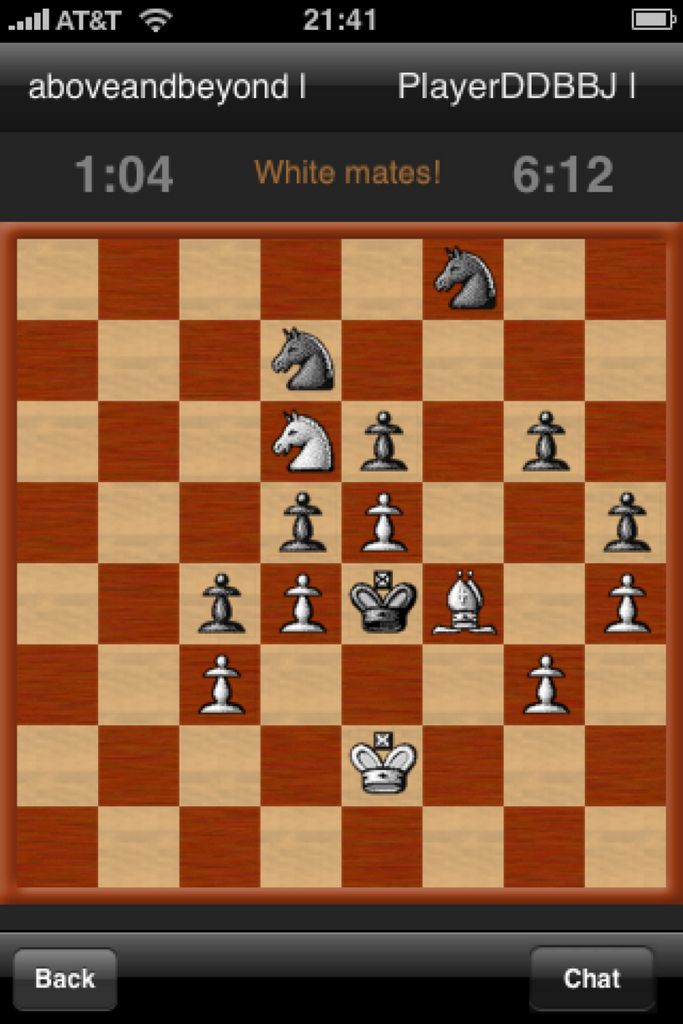I’ve never thought of myself as having obsessive/compulsive/impulsive/addictive tendencies. Although, I listen to every sports podcast available on ESPN, watch any college basketball game the cable company will broadcast, buy shoes like most people buy coffee, and drink coffee like most people drink water. And forget the fact that I’m writing this column while glued to another season of American Idol, nursing a bottle of The Glenlivet 12 and comparing it to Dewars 12 and The Balvenie 15.
But if I wasn’t some kind of an “addict” before, I am now. I’d like to think that this addiction is actually good for me, in a way.
“Seriously, what sort of addiction,” you ask with a skepticism reserved for teenagers’ excuses for arriving home hours past curfew, or for politicians, “could possibly benefit you?” Besides being addicted to serving the poor or curing incurable diseases?
The answer is (drumroll, please) chess.
I am addicted to chess. Chess books. Chess boards. Chess tutorials. Chess websites. Chess openings. Chess tactics. Chess strategy. Win, lose, or draw; chess, chess, chess.
I play when watching TV, eating dinner, eating lunch, at work, at home, falling asleep in bed, on the subway, on the way to the subway, even (WARNING: TMI) in the bathroom. And though I may have broken a cranial blood vessel at some point in there, I assure you it was from concentrating too hard on mastering the risky – but rewarding – chess opening The Danish Gambit, and not from the digestive results of eating too many Danish . . . pastries.
You now wonder one of at least two things: 1) In the bathroom!! Really?!? Is there something wrong with this guy??, and 2) How does one play chess in the bathroom?
Well friends, here’s the secret: Chess With Friends for the iPhone.

There’s no shortage of electronic versions of this ancient classic, and many of them are created for the iPhone. But most of them suck (a sophomoric way of putting it, but that’s what sophomoric efforts at building iPhone apps deserve).
Chess With Friends (CWF) is anything but sophomoric.
Unlike those other apps, CWF was built not to teach one how to play chess, or what the four-move checkmate is, or even to match human vs. computer for practice purposes. It was built so that users can play against family, friends, and even strangers. It’s all about people vs. people, the way chess was meant to be, but instead of operating face-to-face, it is played over the vast and growing series of tubes and invisible waves that make up the iPhoniverse. (I have to say – as bad an idea as this is – what I enjoy most about playing against close friends and loved-ones, is beating my father-in-law over and over again. Good thing I helped produce an unbelievably cute grandson.)
Its purpose as a chess app is only one of the many reasons to fall in love – or in addiction – with CWF. Its piece/board design and rendering are also excellent. One of the most make-or-break aspects of any chess set, whether physical or virtual, is the design of the pieces, and especially in the virtual world, poor design and rendering are infuriating and confusing. Bad chess graphics result in an inability to “see” the enemy’s lines, strengths, and weaknesses, and open the door to making a poor move even worse.
The best case scenario for a virtual chess graphic interface is unnoticeability. You should see the positions of the pieces, their patterns and potential attacks and defenses, and the open squares – not “cool-looking” chess pieces.

CWF has given us a masterful chess GUI for iPhone – a particular challenge given the size and shape limitations of the display. It is simple and elegant. It gives each player the opportunity to “see” – if they can – the panoply of moves and their relative consequences. With bad apps in the past, it’s been easy to shift the blame for my incalculably low skill level to the interface. CWF leaves one without excuse for not seeing Black’s attack on a weak G2 square with his queen and rook.
The best addition to CWF 2.0 – not present in 1.0 – is the new chat function. No longer do I have to talk chess trash after church or work or over twitter: I can tell Tom, for example, “That exchange was so weak, it makes the 2009 NYSE look like the 2007 NYSE!”
I am even now playing five different games with various friends and family from around the country. Yes, one is against my father-in-law, and yes, I’m beating him again. In fact, at least a dozen times during the course of writing this column, I’ve stopped to check and see if there was a move played in any of my games. Thankfully not, or else I’d never have finished.
Unlike most apps, CWF is not about immediate and unending access to information, or constant communication, or any of the other hyperactive reasons people use the iPhone. Amidst the deafening noise of the iPhoniverse App Store, CWF brings a beautiful moment of stillness into the frazzle of instant everything.
Chess is a challenging and intense, yet tranquil, game of war. It is both simple and unimaginably complex. It is ancient and contemporary. It is a game where luck factors not. There is only one player’s skill versus another’s. And while nothing replaces the physical game – the feeling of picking up a pawn, and the palpable concentration of opponents engaged in battle – Chess With Friends offers a rewarding and worthwhile outlet for chess addictions.
Buy it. Play it. Enjoy it. It’s as timeless as an app can be in our age of ephemerality.

